Welcome to the Virtual Roundtable. This series will bring together subject matter experts from different verticals to talk about an advanced technology. The series will focus on use cases, applications and case studies in emerging technologies. The experts on this panel are in conversation with , Lead, NASSCOM Community.
 Bipin Pradeep Kumar is the co-founder and Director at Gaia Smart Cities. Gaia is a start-up in the IoT space bringing together internet of things, digital automation and smart cities. Bipin is the Chair of the Smart City Group for the TEC, DOT, Ministry of Communication and IT and is a core member of the National Working Group on International Telecommunication Union (ITU)’s SG on Smart Sustainable Communities.
Bipin Pradeep Kumar is the co-founder and Director at Gaia Smart Cities. Gaia is a start-up in the IoT space bringing together internet of things, digital automation and smart cities. Bipin is the Chair of the Smart City Group for the TEC, DOT, Ministry of Communication and IT and is a core member of the National Working Group on International Telecommunication Union (ITU)’s SG on Smart Sustainable Communities.
 Deepti Dutt is the Director of Smartcities at Microsoft. She has experience at a strategic position and specializes in managing e-government, public service delivery, process transformation and program management projects. She has track record of conceptualizing, developing and managing large scale complex programs such as Aadhaar authentication and a greenfield smarter city solution.
Deepti Dutt is the Director of Smartcities at Microsoft. She has experience at a strategic position and specializes in managing e-government, public service delivery, process transformation and program management projects. She has track record of conceptualizing, developing and managing large scale complex programs such as Aadhaar authentication and a greenfield smarter city solution.
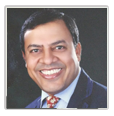 Manish Prasad Sinha is Principal Consultant, Smart Cities at Tech Mahindra. He implemented a pilot – Smart City Solutions and Command Center for Mahindra World City, Jaipur. He has a distinction of handling large and complex projects globally, mainly in the roles of Project Management and as a Business Consultant, largely into Communications Industry.
Manish Prasad Sinha is Principal Consultant, Smart Cities at Tech Mahindra. He implemented a pilot – Smart City Solutions and Command Center for Mahindra World City, Jaipur. He has a distinction of handling large and complex projects globally, mainly in the roles of Project Management and as a Business Consultant, largely into Communications Industry.
 Dhananjay Sharma is the Chief Operating Officer at SenRa. SenRa is a focused PAN India LoRaWAN operator and one of the key contributing member of LoRa Alliance from India. SenRa is offering PAN City LoRaWAN connectivity Solutions on their uniform network layer covering use cases such as Smart Water Meters, Smart Gas Meters, Smart Street Lighting, Smart Parking etc.
Dhananjay Sharma is the Chief Operating Officer at SenRa. SenRa is a focused PAN India LoRaWAN operator and one of the key contributing member of LoRa Alliance from India. SenRa is offering PAN City LoRaWAN connectivity Solutions on their uniform network layer covering use cases such as Smart Water Meters, Smart Gas Meters, Smart Street Lighting, Smart Parking etc.
- Bipin, I have two specific questions for you. First, what does it take for a city to be declared as a smartcity? Does it have to be advancement of the whole ecosystem or are there any other parameters that are measured? Second, given that you have worked in smartcity projects in Lucknow, Varanasi and Raipur, tell us about the challenges as well as the scope to scale smart solutions.
Let me address this in the Indian context. Under the Smart Cities Mission by the Ministry of Housing and Urban Affairs (erstwhile MoUD), Cities submit their proposal to be chosen under the Mission. The proposals they create are ranked on the following criteria – at an Overall City-Level (30%), for their Area-Based Development approach (55 %) and their Pan-City Solution or Solutions (15 %). Within these, for City Level, marks are allocated for the City’s Vision and Goals (5), their Strategic plan (10), Citizen Engagement (10), and its Baseline, KPIs, Self-Assessment and Potential for Improvement (5).
Within Area Based Development and Pan City Solution, cities can choose from 24 features or areas to work on. These areas are part of the four pillars – Institutional, Social, Economic and Physical that have been identified for the comprehensive development of cities. Marks are allocated with different percentages to the Smartness’ of Proposal, Citizen Engagement, Results Orientation, the Process followed and the Implementation framework, including Feasibility and Cost-Effectiveness.
90 cities were chosen like this. The last 10 are awaiting announcement and other 8 or 9 cities were included under the Smart City scheme on varying lines. Thereby in total 108/109 cities in India are in various stages of becoming Smart Cities.
As a next step and to further aid this whole smartness quotient, MoHUA themselves developed a set of ‘Liveability Standards in Cities’[1] to generate a Liveability Index with 79 indicators to rate cities. These 79 Liveability standards indicators have been grouped into 15 categories from the 24 features contained in the Smart City Proposals (SCPs). It is intended that these 79 indicators will contribute to achievement of UN SDGs (Sustainability Development Goals). To finally compute the Index, different weights are assigned to the 4 pillars of comprehensive development and the City’s Liveability Index obtained. The illustration below/alongside depicts this whole process in a simple manner.

Figure 1: Liveability Index [Source: MoHUA]
I will be brief about your next question because the challenges and scope are different for different cities. Every city is unique in its own way – right from its size, its needs, the objectives or goals the city wants to achieve, and even in its culture and ethos. It is globally recognised that the very conceptualisation of a city itself varies from city to city and country to country, depending on the level of development, its willingness to change and reform, the resources available and the aspirations of the city residents.
Consequently the scope and challenges of Agra are very different from those of any other. It is important to realise that it is not a ‘one-size-fits-all’ approach nor can an easily replicable or scalable model be built. If we address the challenges of one city, the same approach cannot be applied to solve the challenges of another city. In each city one has to formulate its own scope, its own vision, plan, include stakeholders and develop a timeframe. Various principles and best practices can be adhered to, but the realisation that customisations are the norm is a fundamental building block.
2. Tech Mahindra is involved in many global smart city projects, in fact, you recently signed a deal with Los Angeles for an energy initiative. But, Manish, let’s talk about India. What projects are you working on India and why do you think the pace of technology adoption is so slow? It will also be great if you can give one specific example of how Tech Mahindra’s solutions are being used.
First of all, Om, thanks a lot for inviting me to the Smart Cities virtual roundtable. So to answer your question about the projects we are working in India and how they are being used , I would like to say that we have been fortunate enough to be part of some of the unique and first of its kind projects in India. To start with, UP Dial 100, which is one of the world’s largest integrated police emergency response management system. We did this our partner, Mahindra Defense, an industry expert in homeland security and defense. Recently, it was recognized by PMO as one of the best innovation (6th best actually) for public administration services. The project covers almost 220 million population of UP which includes 700 Cities and more than 100,000 villages. So you can imagine the scale.
We have done the PAN city security and surveillance for the city of Lucknow in UP; also we have implemented police control and command centers in 4 cities of Rajasthan .i.e. Jaipur, Udaipur, Ajmer and Kota.
Recently, we won, in western part of the country, one of Smart City opportunity as a lead MSI where we would be managing e2e various ICT interventions such as control and command center, ITMS,ATCS, Smart Poles, Solid Waste Management, City Wi-Fi and so on and so forth.
Now addressing your other part of the question about the pace of the technology adoption, see I think we all agree that though there is a clear intent and impetus from government towards digital India or augmenting the ICT transformations in cities to improve the quality of life of citizens, we so have several challenges as well in hand. There is still a digital divide in our country, broadband penetration or mobile internet users are still low. In 2015, mobile internet users were close to only 15% which increased to around 24% in 2017, thanks to player like Reliance Jio, but still we have a long way to go. The other key challenges are around security or cyber security, issues around data privacy n all. Apart from technology, we have challenges in infrastructure as well. Many cities still lacks robust and efficient trunk infrastructure either in terms of sewerage systems, water distribution systems, sanitation so on and so forth. These must be addressed in priority as technology is just an enabler in the overall value chain. Last but not the least, programs like Smart Cities mission, are transformational and has to be in “work in progress” mode continuously. As we know, there are key strategic programs running and monitored by Government around these areas as in due course of time we hope that there would be marked difference and progress in these areas.
3. Deepti, there is a lot happening at Microsoft when it comes to smartcities. You have the CityNext initiative, you have been named the most trusted smart-city vendor. In India, you have also worked with Surat on the smartcity initiative but the full scale of your solution is yet to be implemented. Talking strictly about implementation, what are you current projects in India? What is scope of change in next five years and what sort of changes would you like to see in the ecosystem, if any?
Many of the projects being implemented under the “safe cities” umbrella that involve Dial-100, emergency response, surveillance etc are on Microsoft platforms. One of the best examples that we have is UP Dial 100 being implemented by our partners which runs on our products such Dynamics, SharePoint, Windows & SQL. Dial 100 for states of TN and MP as well as surveillance for multiple cities in MP, AP and Rajasthan run on Microsoft platforms. We also have many of our partners running solutions in areas of solid waste management, environment monitoring, street light, water network monitoring etc on Microsoft cloud, especially leveraging Azure IOT Hub and data platforms.
Given the current cloud era and all new innovations landing on cloud first, we would like to see quicker adoption of cloud in smart cities space – that too in true spirit of cloud where native capabilities of cloud solutions like IOT, data platforms, analytics etc are used (as against creating a private cloud or lifting-shifting on-premise solutions to virtual machines). Only when that starts to happen that the cities will be able to take advantage of innovations in areas of Cognitive, Artificial Intelligence, Machine Learning, IOT and the likes. Besides de-risking implementations from technology obsolescence, using native cloud capabilities also gives client advantages with respect to cost and time to implement. The Government of India (MeITY) has already empaneled Cloud Service providers authorized to provide services to Public Sector Projects and we must take advantage of the same.
The good news is that cloud adoption for smart cities has started to happen. Most city RFPs now ask for cloud at least for DR. MP opted for cloud based common IT platforms. Gandhinagar & Warangal have opted for cloud. We currently have a couple of RFPs – TN, Nashik, Chennai – that ask for solutions to be cloud based. I suppose when a couple of such implementations go live and benefits are demonstrated, we will see more traction in cloud adoption which will not only enable fast tracking technology deployment in smart cities but also contribute to a significant amount of saving in creating redundant / duplicate infrastructure. That money saved could be utilized to provide more innovative solutions for smart cities and citizens.
4. Dhananjay, there are not many startups in the smartcity sector in India. Also, given the money disbursed under the government initiatives so far is not significant, how challenging is it for a startup to thrive? Are you looking at non-governmental players to monetize your solution? What would be your suggestion for other technology startups looking to enter the sector?
Om it is definitely challenging to work in any area as a start-up more so in the field of Infrastructure as capital expenditure is more aligned towards the creation of infrastructure so that the tenancy can be built over it.
We are not the primary bidders hence our work with government is towards the education on LoRaWAN as a technology, carrying out Proof of concepts and bringing in LoRaWAN Stack as part of the RFP’s & Tenders. We are working with all Major MSI’s, SI and other enterprises on both government and non-governmental projects. We are setting up a PAN India Public LoRaWAN network hence it is essential for us to interact and work with the entire ecosystem to gain the transaction. I would suggest technology start-up’s to really work hard on the issue they want to address and how unique is there offering, we have heard that India needs unique solutions but that should not mean that we reinvent the wheel, a true unique solution will find its audience and don’t be deterred by failures as they are part of the process.
Click to read other stories. Share your thoughts and suggestions about the series in the comments section. If you would like us to conduct a roundtable on any new technology, let us know at





 Bipin Pradeep Kumar is the co-founder and Director at Gaia Smart Cities. Gaia is a start-up in the IoT space bringing together internet of things, digital automation and smart cities. Bipin is the Chair of the Smart City Group for the TEC, DOT, Ministry of Communication and IT and is a core member of the National Working Group on International Telecommunication Union (ITU)’s SG on Smart Sustainable Communities.
Bipin Pradeep Kumar is the co-founder and Director at Gaia Smart Cities. Gaia is a start-up in the IoT space bringing together internet of things, digital automation and smart cities. Bipin is the Chair of the Smart City Group for the TEC, DOT, Ministry of Communication and IT and is a core member of the National Working Group on International Telecommunication Union (ITU)’s SG on Smart Sustainable Communities. Deepti Dutt is the Director of Smartcities at Microsoft. She has experience at a strategic position and specializes in managing e-government, public service delivery, process transformation and program management projects. She has track record of conceptualizing, developing and managing large scale complex programs such as Aadhaar authentication and a greenfield smarter city solution.
Deepti Dutt is the Director of Smartcities at Microsoft. She has experience at a strategic position and specializes in managing e-government, public service delivery, process transformation and program management projects. She has track record of conceptualizing, developing and managing large scale complex programs such as Aadhaar authentication and a greenfield smarter city solution. Manish Prasad Sinha is Principal Consultant, Smart Cities at Tech Mahindra. He implemented a pilot – Smart City Solutions and Command Center for Mahindra World City, Jaipur. He has a distinction of handling large and complex projects globally, mainly in the roles of Project Management and as a Business Consultant, largely into Communications Industry.
Manish Prasad Sinha is Principal Consultant, Smart Cities at Tech Mahindra. He implemented a pilot – Smart City Solutions and Command Center for Mahindra World City, Jaipur. He has a distinction of handling large and complex projects globally, mainly in the roles of Project Management and as a Business Consultant, largely into Communications Industry. Dhananjay Sharma is the Chief Operating Officer at SenRa. SenRa is a focused PAN India LoRaWAN operator and one of the key contributing member of LoRa Alliance from India. SenRa is offering PAN City LoRaWAN connectivity Solutions on their uniform network layer covering use cases such as Smart Water Meters, Smart Gas Meters, Smart Street Lighting, Smart Parking etc.
Dhananjay Sharma is the Chief Operating Officer at SenRa. SenRa is a focused PAN India LoRaWAN operator and one of the key contributing member of LoRa Alliance from India. SenRa is offering PAN City LoRaWAN connectivity Solutions on their uniform network layer covering use cases such as Smart Water Meters, Smart Gas Meters, Smart Street Lighting, Smart Parking etc.














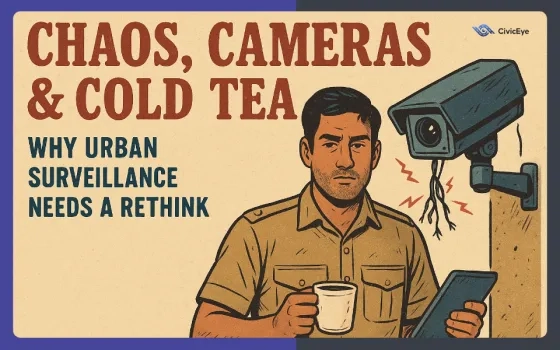
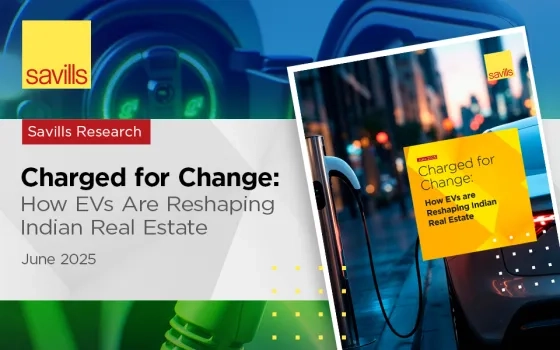

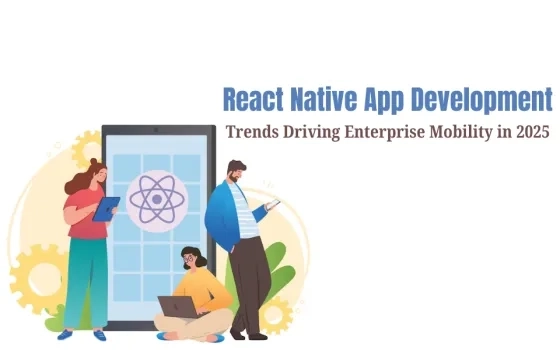

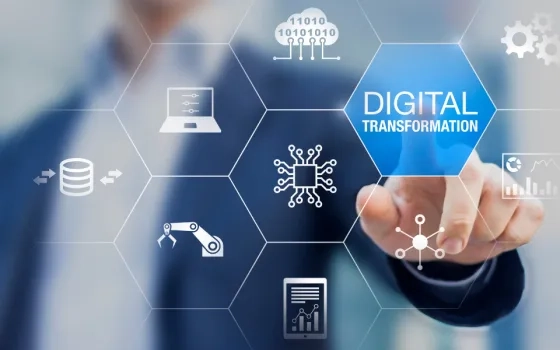




Comment
Hi All,